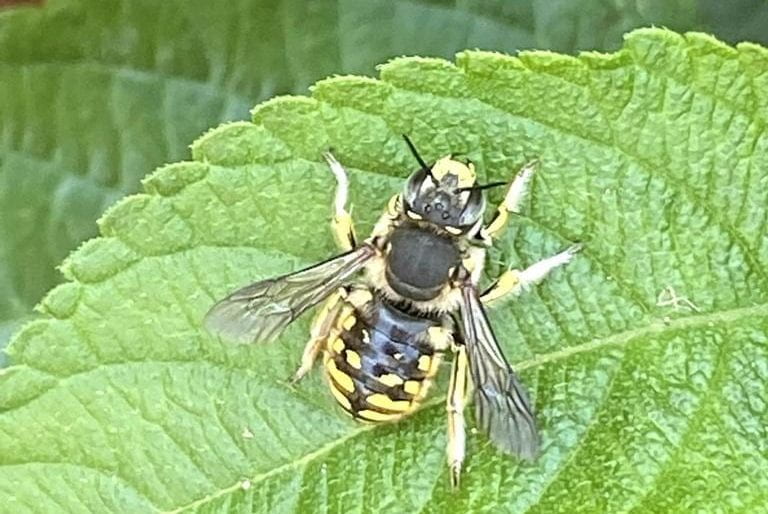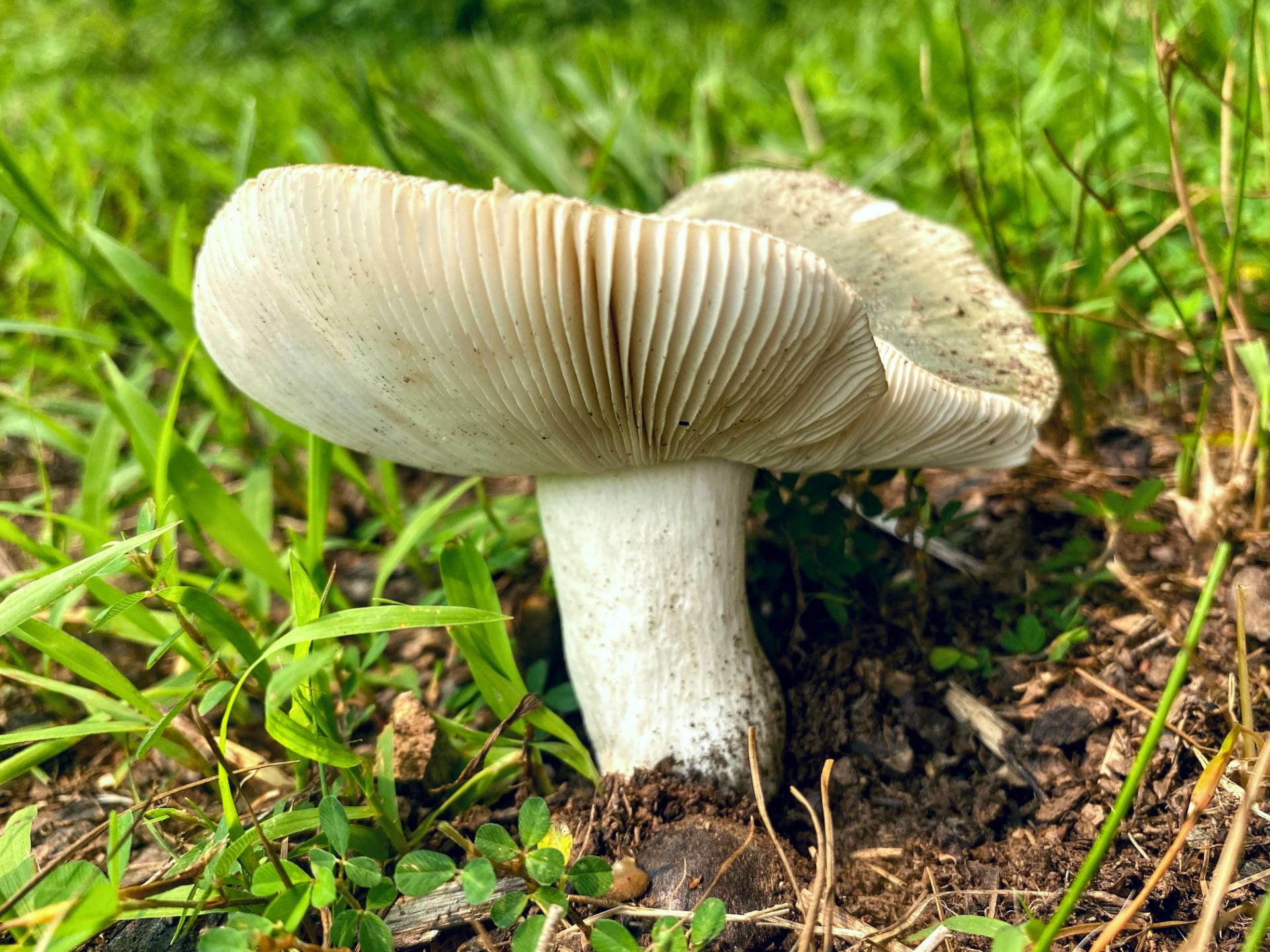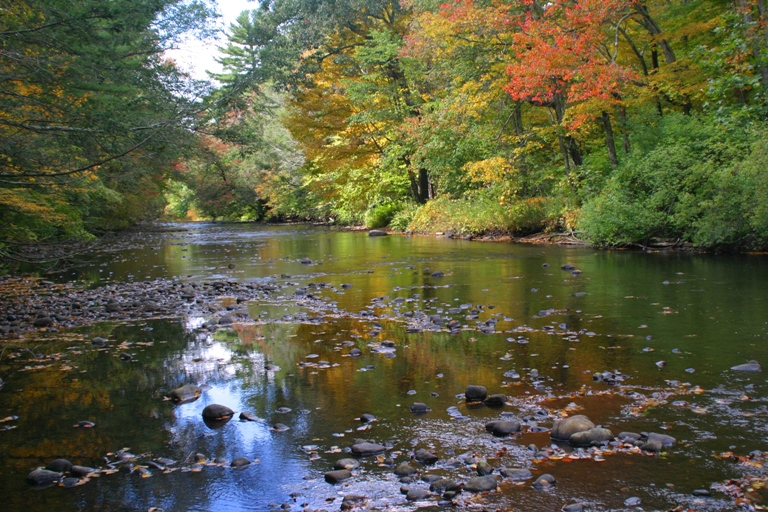
Halictus rubicundus, the orange-legged furrow bee on spearmint flowers outside the public library in Middlebury, Vermont.
I’m struck by the remarkable diversity of bees right in the middle of the extraordinary array of diverse other living things – beetles, flowering plants, fungi. At the same time, I’ve noticed from listening and watching conversations that the broad public sense of ‘bee’ is generally held mostly by the cosmopolitan honeybees and the sense of a hive or colony, or a vague idea of bees, wasps and hornets, again with a sense of colonies and nests and lots of stinging. Bumblebees are part of most peoples’ awareness too – their larger size and relatively slow flower-to-flower foraging behavior makes them relatively easy to observe. The surprise comes when you decide to really park yourself in the middle of a broad patch of different blooming wildflowers – coneflowers and mountain mint and St. John’s wort and roses, wild carrot and asters, milkweed and chicory – then if you really watch closely you begin to see more of who is working the different blossoms.

Two flavid cuckoo bumblebees, Bombus flavidus, in Glacier National Park, Flathead County, Montana, July 2021.
It doesn’t take long to recognize that in addition to the honeybees and bumblebees, there will be five, six, seven or more different kinds of other bees, and bee-like flowerflies too. These “other” bees, many of which are our native bees (part of the ‘apifauna’) are often smaller than honeybees or bumblebees, sometimes quite tiny. In many cases they fly in and out faster or move more rapidly from one patch of flower to another, and they typically require a little more patience and a sharp eye to get a really good look.

A brilliantly green Halicitid sweat bee in the genus Agapostemon on the grounds of London Grove Friends Meeting, Chester Co., PA, May 31, 2021
In the meadows and gardens I’ve been watching this summer, in both the east and the west, one of the families I’ve been enjoying is the Megachilidae – the leafcutter bees, resin bees and carder bees. It is said that this family may hold up to 20% of all named bee species. These bees are solitary bees that do not work from hives or social groups. At the same time, they are also very effective pollinators for many plants and some have been used intentionally for that purpose. The leafcutter bees, in the genus Megachile, are so named for their very noticeable behavior of cutting circular patches of leaf from the margin of chosen plants to use in the construction of a nest that is sometimes compared to a cigar in shape and proportions. They also collect pollen as a food source to provision brood cells in the leaf-skin nest, so that the eggs they lay will hatch to a ready and nutritious supply of larval sustenance.

The Broad handed leafcutter bee, Megachile latimanus, on chicory flower, Addison County, Vermont, August 2021
I was surprised to find among bees I observed that there are several species that are not native at all but are introduced, either accidentally or intentionally, and a few of these have become well established, perhaps posing some competitive stress to our native Megachilid species. We often think about introduced or even invasive weeds, and other more obvious pest insects (thinking spotted lanternfly for example), but I had not yet known about these non-native, solitary Megachilid bees that are complicating the ecological relationships among native insect and plant species.

Anthidium manicatum, the European wool carder bee, guarding territory and chasing other bees away in a native plant pollinator garden, Wynnewood PA. We do have native “wool carder” bees too – this isn’t one of them!
Native Megachilid bees can be supported with nesting sites or nesting boxes (see below), and like many other insects, they benefit from a diverse habitat with different pollen and nectar sources that flower across a long blooming season. Watch for their distinctive shape and abdomen next time you see a patch of flowers being worked by honeybees.










 Among the diverse and colorful mushrooms I photographed last summer, one that most stood out to me was a bottle green Russula growing in a grass trail immediately next to a hardwood forest. Of course I wanted to know what it was, but in exploring possible identities, I soon learned that the genus is complex and a group of mushrooms known previously as Russula virescens (a European species) probably contained quite a number of distinct and unpublished species waiting to be disentangled. This week, I thought I would return to the locale of my previous green mushroom sighting to see if I might get lucky enough to see it again. It seemed like a long shot, but indeed at almost the very same location on the trail, and (mostly) spared by a recent pass of the lawnmower, were five or six fruiting specimens. Now I can’t be entirely certain this is the same fungus, and it was much more of a gray green than last year’s spinach green, but I think it probably is the same.
Among the diverse and colorful mushrooms I photographed last summer, one that most stood out to me was a bottle green Russula growing in a grass trail immediately next to a hardwood forest. Of course I wanted to know what it was, but in exploring possible identities, I soon learned that the genus is complex and a group of mushrooms known previously as Russula virescens (a European species) probably contained quite a number of distinct and unpublished species waiting to be disentangled. This week, I thought I would return to the locale of my previous green mushroom sighting to see if I might get lucky enough to see it again. It seemed like a long shot, but indeed at almost the very same location on the trail, and (mostly) spared by a recent pass of the lawnmower, were five or six fruiting specimens. Now I can’t be entirely certain this is the same fungus, and it was much more of a gray green than last year’s spinach green, but I think it probably is the same.




















